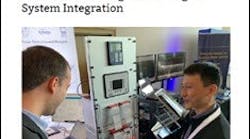Microgrids play a key role in transforming the energy landscape, but microgrid projects face several technical challenges around integration and interoperability issues. These challenges can impact both the project cost and its schedule. Hardware in the Loop (HIL) testing and model-based engineering techniques provide an effective way to address microgrid system integration and interoperability challenges.
By validating a microgrid system concept prior to installation, the owner or operator can understand its efficiency, flexibility and reliability, which ultimately improves its chances for success. These same testing practices can be used when integrating new components into existing microgrids.
Model-based design, when used with controller HIL (C-HIL) reduces project risk by allowing iterative simulations at both the system and component level as the microgrid evolved through the development process. To help boost awareness of how Hardware in the Loop testing can benefit microgrids, Microgrid Knowledge has prepared this 6-part special report, made available for free download, courtesy of Typhoon HIL.
